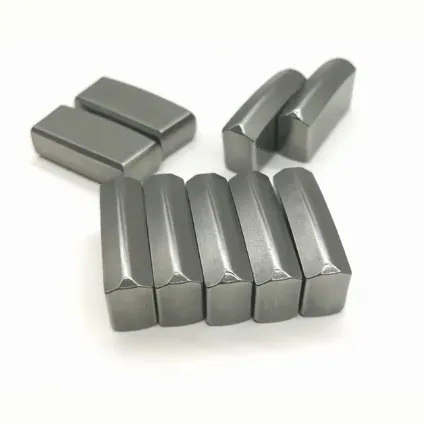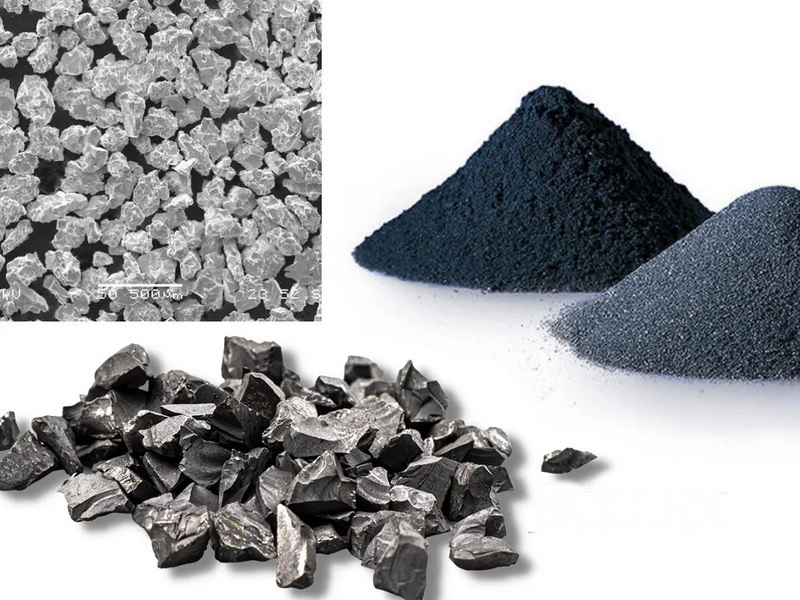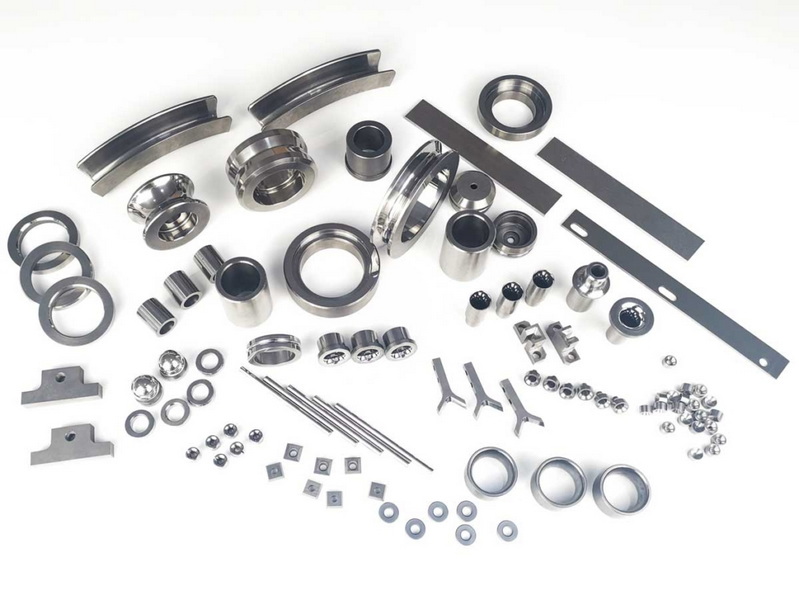Content Menu
● Introduction to Elementary Substances
● Historical Background of Tungsten Carbide
● Composition of Tungsten Carbide
>> Crystal Structure
● Synthesis of Tungsten Carbide
>> 1. Direct Carburization
>> 2. Fluid Bed Process
>> 3. Chemical Vapor Deposition (CVD)
● Properties of Tungsten Carbide
>> 1. Mechanical Properties
>> 2. Thermal and Electrical Conductivity
>> 3. Corrosion Resistance
● Applications of Tungsten Carbide
>> 1. Industrial Cutting Tools
>> 2. Aerospace and Defense
>> 3. Medical Devices
>> 4. Energy Sector
● Environmental and Economic Considerations
>> 1. Mining Impact
>> 2. Recycling Techniques
● Challenges and Innovations
>> 1. Brittleness and Toughness Trade-Off
>> 2. 3D Printing
>> 3. Sustainable Alternatives
● Market Trends and Future Outlook
● Conclusion
● FAQ
>> 1. How does tungsten carbide compare to diamond in hardness?
>> 2. Can tungsten carbide be welded or repaired?
>> 3. Why is cobalt used as a binder in tungsten carbide?
>> 4. Is tungsten carbide magnetic?
>> 5. What limits the use of tungsten carbide in high-temperature applications?
● Citations:
Tungsten carbide, with the chemical formula WC, is a compound consisting of tungsten and carbon atoms. It is renowned for its exceptional hardness, wear resistance, and high melting point, making it a crucial material in various industrial applications. However, the question of whether tungsten carbide is an elementary substance requires an understanding of what constitutes an elementary substance and the composition of tungsten carbide itself.

Introduction to Elementary Substances
An elementary substance is a pure chemical substance that consists of only one type of atom, distinguished by its atomic number. Examples include elements like oxygen (O₂), carbon (C), and tungsten (W). These substances are made up of atoms of the same element, which may be bonded together in molecules or exist as free atoms. In contrast, a compound like tungsten carbide contains two or more elements chemically bonded in fixed proportions.
Historical Background of Tungsten Carbide
Tungsten carbide was first synthesized in the late 19th century by French chemist Henri Moissan, who combined tungsten and carbon in an electric furnace. However, its industrial potential was not realized until the 1920s when German scientists developed methods to sinter tungsten carbide with cobalt binders, creating a material tough enough for cutting tools. By the 1930s, it revolutionized metalworking industries, replacing traditional steel tools in high-precision machining.
Composition of Tungsten Carbide
Tungsten carbide is formed by combining tungsten (W) and carbon (C) atoms in a 1:1 molar ratio. The most common form used in industrial applications contains approximately 94% tungsten and 6% carbon by weight. This composition confirms that tungsten carbide is a compound, not an elementary substance, as it consists of two distinct elements chemically bonded in a crystalline structure.
Crystal Structure
Tungsten carbide has a hexagonal crystal lattice (Figure 2), where each tungsten atom is surrounded by six carbon atoms. This arrangement contributes to its exceptional hardness and stability.
Synthesis of Tungsten Carbide
1. Direct Carburization
The primary method involves heating tungsten metal or powder with carbon (e.g., graphite) at 1,400–2,000°C in a hydrogen atmosphere. The reaction is:
W+C→WC
This process produces fine tungsten carbide powder, which is then mixed with binders like cobalt (6–12%) and sintered under high pressure.
2. Fluid Bed Process
A lower-temperature alternative uses a fluidized bed reactor with a CO/CO₂ gas mixture and hydrogen. This method reduces energy consumption and produces uniform particle sizes.
3. Chemical Vapor Deposition (CVD)
CVD techniques deposit tungsten carbide coatings onto substrates, ideal for creating wear-resistant surfaces for aerospace components.

Properties of Tungsten Carbide
1. Mechanical Properties
- Hardness: Mohs hardness of ~9 (compared to diamond's 10).
- Melting Point: 2,870°C, higher than most metals.
- Young's Modulus: 530–700 GPa, three times stiffer than steel.
- Density: 15.6 g/cm³, comparable to uranium.
2. Thermal and Electrical Conductivity
Despite its hardness, tungsten carbide conducts electricity (similar to bronze) and heat efficiently, making it suitable for electrical discharge machining (EDM).
3. Corrosion Resistance
It resists oxidation at temperatures up to 600°C and is inert to most acids, except hydrofluoric acid and nitric acid at high concentrations.
Applications of Tungsten Carbide
1. Industrial Cutting Tools
- Drill Bits: Tungsten carbide-tipped drills (Figure 5) outlast steel by 100x in abrasive environments.
- Milling Inserts: Used for machining titanium and Inconel in aerospace manufacturing.
2. Aerospace and Defense
- Rocket Nozzles: Withstands extreme temperatures in propulsion systems.
- Armor-Piercing Ammunition: Utilizes WC's density and hardness for penetrators.
3. Medical Devices
- Surgical Scalpels: Sharper and more durable than stainless steel.
- Orthopedic Implants: Coated with WC for wear resistance in joint replacements.
4. Energy Sector
- Oil Drilling Inserts: WC-coated drill bits reduce downtime in deep-well exploration.
- Nuclear Control Rods: High neutron absorption efficiency.
Environmental and Economic Considerations
1. Mining Impact
Tungsten mining, primarily in China (85% of global supply), raises concerns about deforestation and water pollution. Recycling WC scrap recovers 95% of the material, reducing reliance on virgin ore.
2. Recycling Techniques
- Zinc Process: Dissolves cobalt binders to separate WC powder.
- Direct Reuse: Crushed WC scrap is re-sintered into new tools.
Challenges and Innovations
1. Brittleness and Toughness Trade-Off
WC's high hardness comes with brittleness. Innovations like nanostructured WC (grain sizes < 100 nm) improve fracture toughness without sacrificing hardness.
2. 3D Printing
Additive manufacturing enables complex WC parts, such as lattice structures for lightweight aerospace components.
3. Sustainable Alternatives
Researchers are developing cobalt-free binders (e.g., nickel, iron) to address toxicity concerns in traditional WC-cobalt composites.
Market Trends and Future Outlook
The global tungsten carbide market is projected to grow at 6.2% CAGR (2023–2030), driven by demand from automotive and renewable energy sectors. Key players include Sandvik AB, Kennametal, and Mitsubishi Materials.
Conclusion
Tungsten carbide is unequivocally a compound, not an elementary substance. Its unmatched properties have cemented its role in industries ranging from manufacturing to healthcare. As advancements in nanotechnology and sustainability progress, tungsten carbide will remain indispensable in overcoming engineering challenges.

FAQ
1. How does tungsten carbide compare to diamond in hardness?
While diamond is the hardest natural material (Mohs 10), tungsten carbide ranks at ~9, making it suitable for most industrial applications without the prohibitive cost of diamond tools.
2. Can tungsten carbide be welded or repaired?
No—its extreme hardness makes welding impractical. Damaged WC components are typically replaced or recycled.
3. Why is cobalt used as a binder in tungsten carbide?
Cobalt enhances toughness by filling gaps between WC grains, preventing crack propagation. However, alternatives like nickel are gaining traction for eco-friendly production.
4. Is tungsten carbide magnetic?
Pure WC is non-magnetic, but cobalt-bonded variants exhibit slight magnetism due to the cobalt content.
5. What limits the use of tungsten carbide in high-temperature applications?
Above 500°C, WC oxidizes gradually. Coatings like chromium carbide are applied to improve oxidation resistance.
Citations:
[1] https://en.wikipedia.org/wiki/Tungsten_carbide
[2] https://www.linde-amt.com/resource-library/articles/tungsten-carbide
[3] https://www.allied-material.co.jp/en/techinfo/tungsten_carbide/features.html
[4] https://www.istockphoto.com/photos/tungsten-carbide
[5] https://www.alamy.com/stock-photo/tungsten-carbide.html
[6] https://www.gauthmath.com/solution/1744724928467973/Tungsten-carbide-can-be-used-to-make-the-tips-of-ballpoint-pens-The-chemical-for?is_new_user=1
[7] https://periodictable.com/Elements/074/pictures.html
[8] https://www.freepik.com/free-photos-vectors/tungsten
[9] https://www.carbideprobes.com/wp-content/uploads/2019/07/TungstenCarbideDataSheet.pdf
[10] https://www.vedantu.com/chemistry/tungsten-carbide
















